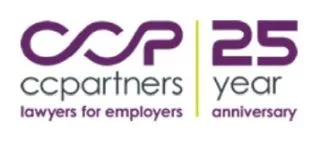In the last couple of years, employers and organizations have seen their costs associated with employee absenteeism skyrocket. Absenteeism in the workplace can take many forms, ranging from intermittent absences, employees off for minor illnesses or injury or lengthy absences. The million dollar question for employers is how it should go about containing and managing such costs, particularly in an economic climate of financial restraint. To avoid increasing costs, more employers and organizations have begun to implement disability management programs and processes.
An effective disability management program is a process that is specifically designed to facilitate the employment of persons with a disability or injury through a coordinated effort involving several stakeholders, including human resources, management and the employee with a disability or injury. Some of the common steps that are recommended by the Conference Board of Canada in its October 2013 paper, Creating an Effective Workplace Disability Management Program are summarized below:
- Creating a Needs Assessment – this involves reviewing what formal or informal practices exist or should exist to best support an employee during an absence or return to work. It also involves identifying whether the absence stems from an occupational or non-occupational condition, and determining what the employee's functional abilities and restrictions are
- Identifying key stakeholders who will oversee and monitor the disability management process
- Establishing disability management processes and policies
- Developing a communication plan – this should aim to communicate the program's objectives, successes, and challenges to all employees. The communication plan should also address the steps that management and human resources will take to stay in touch with an employee during a leave, monitor and track medical documentation for accommodation purposes, and to determine whether further, more detailed medical information is required from the employee.
- Developing an individualized return to work plan that is specific to the employee's needs
- Determining accommodation and transitional job options
- Consider managing or outsourcing disability claims
- Monitoring and evaluating the program
- Monitoring and evaluating individual accommodation and return-to-work plans
In the short-term, it may seem daunting and time-consuming for employers and human resource professionals to create a formalized disability management process, but the benefits of having a process in place will lead to cost-reduction and reduction in legal exposure if workplace absenteeism is monitored effectively.
Employers should also be aware that effective January 1, 2016, under the Integrated Accessibility Standard ("IAS"), which is a regulation under the Accessibility for Ontarians with Disabilities Act, 2005, employers who have 50 or more employers will be required by law to develop formalized individual accommodation plans and return to work plans for their employers. In light of the upcoming compliance date, it is recommended that employers begin the process of evaluating their existing absenteeism policies, and develop a coordinated process for dealing with disability and injury management that is in compliance with AODA requirements.
Although smaller organizations with fewer than 50 employees are not required to develop individual accommodation plans and return to work plans, it is recommended that such policies be implemented for due diligence purposes, and to avoid costly legal human rights claims alleging discrimination on the basis of disability for failure to accommodate.
If your organization requires assistance in developing an effective disability management process and getting up to speed with the IAS standards, the lawyers at CCP have extensive experience designing such programs, and offering training regarding same, and would be happy to arrange for a consultation to review your organization's existing policies.
The content of this article is intended to provide a general guide to the subject matter. Specialist advice should be sought about your specific circumstances.

